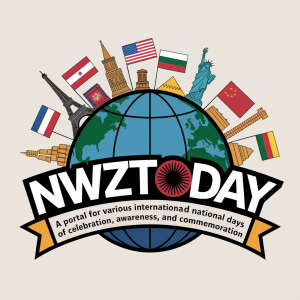Every year on July 28, we pause to honor our planet by celebrating World Nature Conservation Day. This global observance serves as a vital reminder of the pressing need to protect and preserve our natural resources for future generations. As we gear up for the 2025 celebration, let’s delve into the history, significance, and ways to show our gratitude to nature.
Why Do We Celebrate World Nature Conservation Day?
The essence of this day lies in promoting awareness about the importance of conserving the Earth’s bountiful resources. From lush forests and pristine rivers to diverse wildlife and fertile soil, these treasures are the backbone of life on Earth. Unfortunately, human activities like deforestation, pollution, and overexploitation are putting immense pressure on these resources.
World Nature Conservation Day encourages individuals, communities, and nations to adopt sustainable practices and reduce their ecological footprint. By doing so, we can ensure a healthier planet for generations to come.
A Brief History of the Day
While the exact origins of World Nature Conservation Day remain unclear, its message resonates universally. The day likely emerged from global initiatives aimed at addressing environmental challenges, such as climate change, biodiversity loss, and resource depletion. Over time, it has become a vital platform to inspire collective action and environmental stewardship.
How Is This Day Celebrated?
Communities worldwide mark this day with various activities that highlight the significance of nature conservation. Here are some popular ways to celebrate:
- Tree Planting Drives: Join a local group or start your own initiative to plant trees and restore green spaces.
- Clean-Up Campaigns: Participate in beach, park, or neighborhood clean-ups to reduce litter and pollution.
- Workshops and Seminars: Attend or organize events to educate people about sustainable practices and climate action.
- Eco-Friendly Practices: Commit to reducing single-use plastics, conserving water, and supporting renewable energy sources.
These actions may seem small, but collectively, they make a significant impact on our planet’s health.
Fun Facts About Nature Conservation
- Did you know that forests cover about 31% of the Earth’s land area and are home to 80% of terrestrial species?
- Recycling one aluminum can saves enough energy to run a TV for three hours!
- Coral reefs, often called the “rainforests of the sea,” support more marine species than any other ocean ecosystem.
How You Can Make a Difference
Every individual has the power to contribute to nature conservation. Here’s how you can start:
- Reduce, Reuse, Recycle: Minimize waste by adopting these three Rs in your daily life.
- Conserve Water: Fix leaks, use water-saving appliances, and avoid wastage.
- Support Conservation Organizations: Donate or volunteer for groups that work towards protecting the environment.
- Spread Awareness: Share knowledge and inspire others to adopt eco-friendly habits.
Join the Movement!
As World Nature Conservation Day 2025 approaches, let’s pledge to make a difference. Whether it’s planting a tree, reducing waste, or simply spreading the word, every action counts. Together, we can create a sustainable future for our planet and all its inhabitants.
Remember, nature doesn’t need us; we need nature. Let’s work hand-in-hand to preserve it, not just for us, but for generations to come. Happy World Nature Conservation Day!








